 16. Faux Panels
16. Faux Panels 16. Faux Panels
16. Faux PanelsTrompe l’oeil effects “fool the eye” into seeing more than is there. In this case, a chair rail and some paint imitate wood paneling, creating depth and texture on plain walls.
The trickiest part of this project is deciding on the size of the “panels.” The dimensions for every project will be slightly different because the panels have to be tailored to the size of the room and length of the walls. Measure the walls in question and calculate a size that produces complete panels on as many walls as possible.
For this technique to succeed, the walls need to be in very good condition before you begin. The wood-panel effect is created by dragging and lining, both of which need to be done on smooth, flat surfaces to ensure straight lines. Prepare the walls carefully.

 How to Paint Faux Panels
How to Paint Faux Panels
Apply two coats of pale beige paint to the entire project area, including the chair rail. (If the room does not have a chair rail, install one 30 to 36" above the floor.)
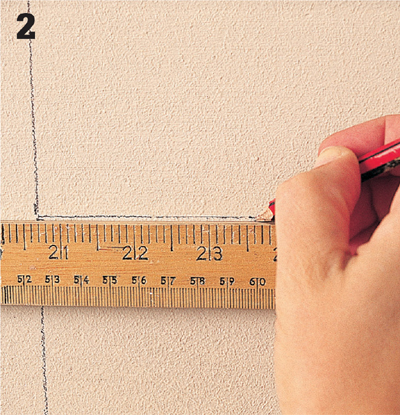
Measure and draw panels in proportion to the length of the wall and height of the chair rail. Use a carpenter’s level or a laser level to make sure the lines are perfectly straight.
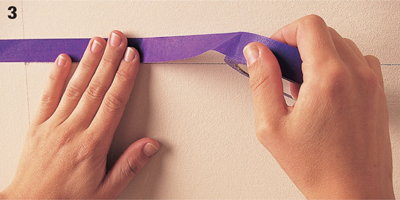
Mask off the horizontal “boards” above and below the central square of each panel.
Mix equal parts of nut brown paint and water in a pail or bucket. Dip a clean 2" paintbrush into the diluted paint and pat it on clean paper towels to remove the excess. Brush the paint vertically onto one “board” at a time.
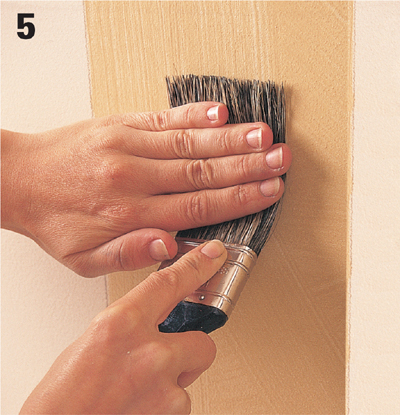
While the paint is still wet, hold a dragging brush at the top of the “board.” Place your fingers near the tip of the bristles to control them, and pull the brush down through the wet paint. Keep the lines as straight as possible. Continue until you’ve painted and dragged all the vertical “boards” on the wall. Paint and drag the central square of each panel on the wall. Remove the masking tape and allow the paint to dry.
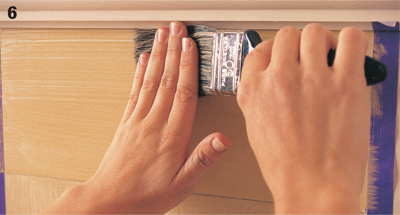
Mask off the vertical panels in preparation for painting the horizontal “boards.” Using the same nut-brown wash and the same dragging technique, paint and drag the horizontal parts of the panels. Drag the brush through the wet paint in the same direction on each “board” on the wall. Remove the masking tape and let the paint dry.
Paint the wash over the chair rail, using long, sweeping strokes. The goal is to create the same type of “grain” on the chair rail as on the “panels.”
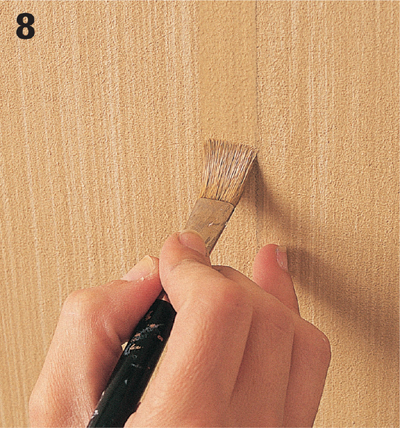
Use a small brush and the nut brown wash to create shadows at the edges of the panels. Paint a narrow band around the edges of the central square to create the illusion that the areas around the square are raised.
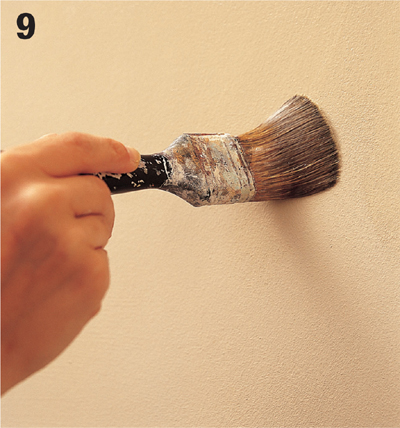
If a drag isn’t straight enough, run over the paint again while it is still wet. It can be helpful to hang a plumb bob or shoot a laser line to act as a guide while you drag.